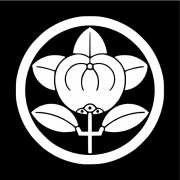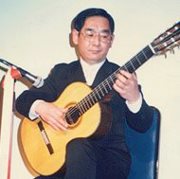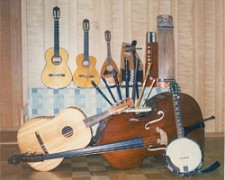Narciso Yepes ナルシソ・イエペス の捧げもの
- 2018年05月03日(木) 0:44
- カテゴリ: 1000万アクセス, お知らせ, オホーツク, ギター, スペイン, 北海道, 国際, 日本, 映画, 美幌町, 音楽, 音楽療法
- この記事へのコメントは 1 件あります。
Narciso Yepes ナルシソ・イエペス の捧げもの
関連記事
Narciso Yepes (14 November 1927 – 3 May 1997) was born into a family of humble origin in Lorca, Region of Murcia. His father gave him his first guitar when he was four years old, and took the boy five miles on a donkey to and from lessons three days a week. Yepes took his first lessons from Jesus Guevara, in Lorca. Later his family moved to Valencia when the Spanish Civil War started in 1936. On 16 December 1947 he made his Madrid début, performing Joaquín Rodrigo’s Concierto de Aranjuez with Ataúlfo Argenta conducting the Spanish National Orchestra. The overwhelming success of this performance brought him renown from critics and public alike. Soon afterwards, he began to tour with Argenta, visiting Switzerland, Italy, Germany, and France. During this time he was largely responsible for the growing popularity of the Concierto de Aranjuez, and made two early recordings, both with Argenta[6] – one in mono with the Madrid Chamber Orchestra (released between 1953 and 1955), and the second in stereo with the Orquesta Nacional de España (recorded in 1957 and released in 1959). On 18 May 1951, as he leant on the parapet of a bridge in Paris and watched the Seine flow by, Yepes unexpectedly heard a voice inside him ask, “What are you doing?” He had been a nonbeliever for 25 years, perfectly content that there was no God or transcendence or afterlife. But that existential question, which he understood as God’s call, changed everything for him. He became a devout Catholic, which he remained for the rest of his life. In 1952 a work (”Romance”), Yepes claims to have written when he was a young boy,[10] became the theme to the film Forbidden Games (Jeux interdits) by René Clément. Despite Yepes’s claims of composing it, the piece (”Romance”) has often been attributed to other authors; indeed published versions exist from before Yepes was even born[citation needed], and the earliest known recording of the work dates from a cylinder from around 1900.[citation needed] In the credits of the film Jeux Interdits, however, “Romance” is credited as “Traditional: arranged – Narciso Yepes.” Yepes also performed other pieces for the Forbidden Games soundtrack. His later credits as film composer include the soundtracks to La Fille aux yeux d’or (1961) and La viuda del capitán Estrada (1991). He also starred as a musician in the 1967 film version of El amor brujo. In Paris he met Maria Szumlakowska, a young Polish philosophy student, the daughter of Marian Szumlakowski, the Ambassador of Poland in Spain from 1935 to 1944. They married in 1958 and had two sons, Juan de la Cruz (deceased), Ignacio Yepes, an orchestral conductor and flautist, and one daughter, Ana Yepes, a dancer and choreographer. In 1964, Yepes performed the Concierto de Aranjuez with the Berlin Philharmonic Orchestra, premièring the ten-string guitar, which he invented in collaboration with the renowned guitar maker José Ramírez III. After 1964, Yepes used the ten-string guitar exclusively, touring all six inhabited continents, performing in recitals as well as with the world’s leading orchestras, giving an average of 130 performances each year. He recorded the Concierto de Aranjuez for the first time with the ten-string guitar in 1969 with Odón Alonso conducting the Orquesta Sinfonica R.T.V. Española. Apart from being a consummate musician, Yepes was also a significant scholar. His research into forgotten manuscripts of the sixteenth and seventeenth centuries resulted in the rediscovery of numerous works for guitar or lute. He was also the first person to record the complete lute works of Bach on period instruments (14-course baroque lute). In addition, through his patient and intensive study of his instrument, Narciso Yepes developed a revolutionary technique and previously unsuspected resources and possibilities. He was granted many official honours including the Gold Medal for Distinction in Arts, conferred by King Juan Carlos I; membership in the Academy of “Alfonso X el Sabio” and an Honorary Doctorate from the University of Murcia. In 1986 he was awarded the Premio Nacional de Música of Spain, and he was elected unanimously to the Real Academia de Bellas Artes de San Fernando. In the 1980s, Yepes formed Trio Yepes with his son Ignacio Yepes on flute and recorder and his daughter Ana dancing to her own choreography. After 1993, Narciso Yepes limited his public appearances due to illness. He gave his last concert on 1 March 1996 in Santander (Spain). He died in Murcia in 1997, after a long battle with lymphoma. (Narciso Yepes – Wikipedia)
ナルシソ・イエペス(Narciso Yepes、1927年11月14日 – 1997年5月3日)はスペインのギタリスト、作曲家。ナルシソ・ジェペスとも表記される。来歴 / スペインのムルシア地方のロルカ近郊の農家に生まれた。4歳の時に初めてギターに触れ、ロルカの音楽アカデミーでギターを学び、その後バレンシア音楽院に進んでギターや作曲を学んだ。ここで、作曲家のビセンテ・アセンシオ教授に大きな影響を受ける。また、マドリード音楽院では、サインス・デ・ラ・マーサにギターを師事した。1947年12月17日スペイン劇場でのスペイン国立管弦楽団の定演コンサートに名指揮者アタウルフォ・アルヘンタにより招かれ、ロドリーゴのアランフエス協奏曲を演奏した。その後に行われたパリやジュネーヴなどでの演奏会の成功で、イエペスの名はヨーロッパ中に知れ渡った。1952年に、パリのカフェで映画監督のルネ・クレマンと偶然知り合い、「映画自体はすでに撮ってあるが、どんな音楽をつけたらよいか決めかねているので、映画のための音楽を担当してほしい」と監督から依頼を受ける。当初、アンドレス・セゴビアに音楽を担当してもらう予定だったが、すでに映画制作の為の予算を使い果たしており、セゴビアとは制作費の折り合いがつかず、当時まだ新人であったイエペスに音楽担当の依頼をする事となった。 そこで、24歳のイエペスは映画『禁じられた遊び』の音楽の編曲・構成、演奏を1本のギターだけで行った。そして、その映画が公開されると、メインテーマ曲「愛のロマンス」が大ヒットし、世界的に有名なギタリストとなった。それから世界各地でリサイタルやオーケストラとの共演を行い、日本にも1960年から1996年までの間に計17回訪問した。1964年からは、ホセ・ラミレス3世と共同で通常より音域の広い10弦ギターを開発した。演奏の軽快さが多少犠牲になり、一部では批判もあったが、均一な共鳴をもつ透明度の高い音色を実現し、多くの音楽愛好家に受け入れられた。1989年4月スペイン芸術院のサン・フェルナンド王立アカデミーの会員に任命された。これはサインス・デラマーサ、アンドレス・セゴビアに続く3人目の栄誉である。1990年頃に、悪性リンパ腫に冒されている事が発覚し、1993年には医師から演奏活動の中止を忠告されたが、その後も演奏活動を続けた。だが、1996年3月にサンタンデール音楽祭に出演したのが最後のステージとなり、1997年5月3日に69歳で死去した。イエペスの信念である「芸術は神のほほえみである」の名のもとに10弦ギターで世界各地を演奏活動して回ったことにより、日本はもとより全世界で圧倒的な人気を誇り、なお且つ世界各地に及ぼした音楽的影響の高さはひときわ抜きん出ていた。レパートリーの広さ(バッハのリュート組曲におけるバロック・リュートの演奏、テレサ・ベルガンサとの歌の伴奏、世界各地のオーケーストラとのギターコンチェルトによる共演、フェルナンド・ソルの練習曲集の演奏、カタルーニャ地方の民謡を集めた曲集の演奏、ラテン系の近代・現代の作曲家の作品の10弦ギターによる演奏、弟子のモンダンとの二重奏、「トリオ・イエペス」による親子の共演等 )も、来日回数も、他の追随を許さぬものがあり、年間120回にもおよぶ演奏会を30年近く世界各地で行い、今までに録音したレコードの枚数も50枚を超えた(1967年から1989年まではドイツ・グラモフォン専属となった)。日本国内での代表的な弟子として、荘村清志、芳志戸幹雄、小原聖子等がいる。イエペスには数々の栄誉が与えられており、代表的なものとしてムルシア大学名誉博士号、イサベル・ラ・カトリカ十字章、スペイン国王から芸術功労金メダル、スペイン文化賞からスペイン音楽大賞、スペイン作曲家協会賞、国営テレビ局大賞等がある。(ナルシソ・イエペス – Wikipedia)
関連サイト
Narciso Yepes Official Homepage (ナルシソ·・イエペス公式ホームページ)
Ana Yepes (アナ・イエペス)| earlydance.org
関連エント
Narciso Yepes の検索結果 ー 美幌音楽人 加藤雅夫
ツイッター( Twitter)
フェイスブック (Facebook)
- 一つ新しい記事: ウクライナのサンドアートパフォーマンス
- 一つ古い記事: 花はどこへ行った(ピート・シーガー)について
1 件のコメント
コメントをどうぞ
- お名前とメールアドレスは必ず入力してください。
(メールアドレスは管理者にのみ通知され、コメント一覧には表示されません) - いただいたコメントは管理者の承認が必要となる場合がありますのでご了承ください。















コメント欄を閉鎖しました。
メッセージはこちらから。
加藤 雅夫 より 2018 年 7 月 6 日 00:44